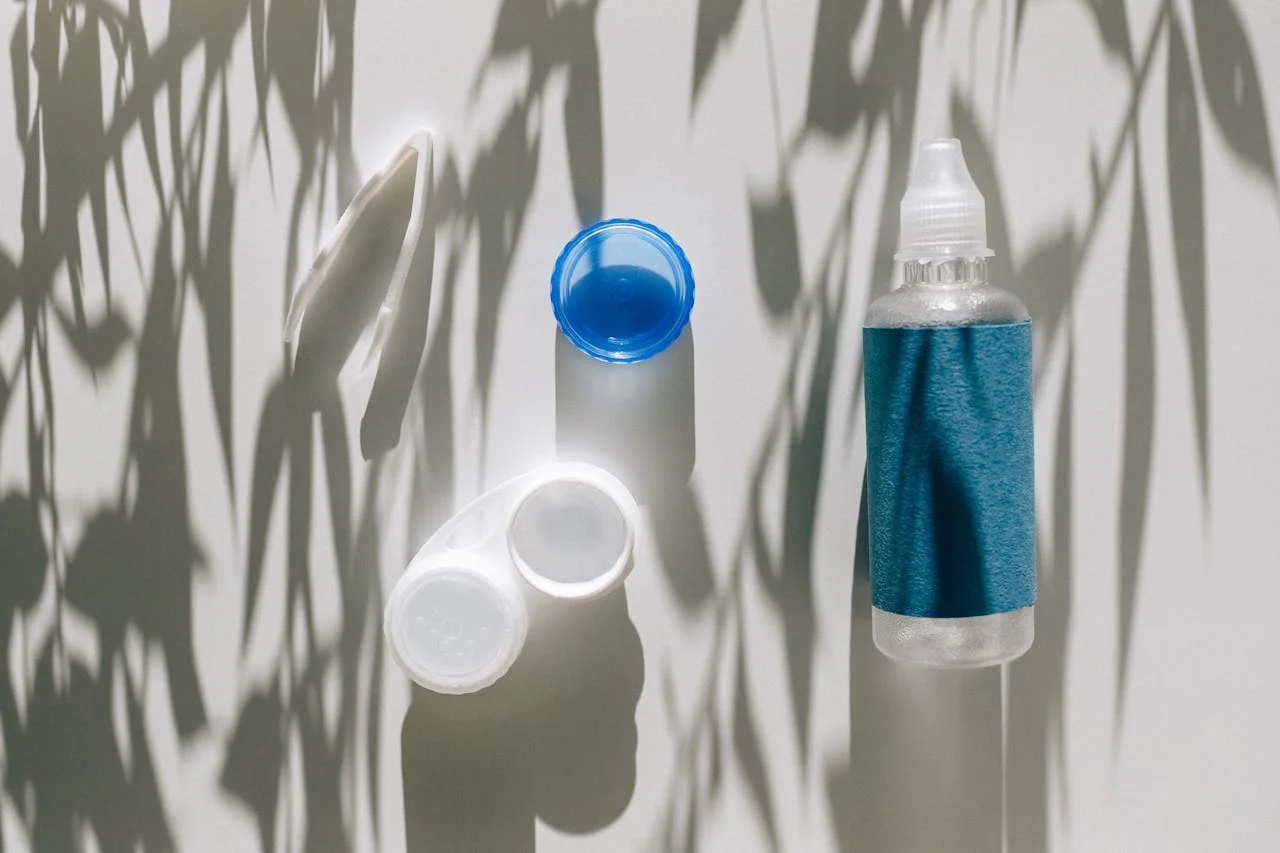Waking up with gritty, uncomfortable eyes. Squinting at your computer screen by midday because your vision keeps blurring. Feeling relief the moment you finally remove your contact lenses at night. If this describes your daily routine, you’re part of a surprisingly large community—nearly half of all contact lens wearers experience some degree of dryness. But here’s what you need to know: it doesn’t have to be this way.
Managing dry eyes while wearing contacts requires a thoughtful approach that combines the right lens technology with proper hydration strategies. This guide will walk you through everything you need to create a comfort routine that actually works for your lifestyle.
Understanding Why Contact Lenses and Dry Eyes Don’t Get Along
Your eyes naturally produce a tear film with three layers: an oily outer layer, a watery middle layer, and a mucus base. This delicate system keeps your eyes lubricated and protects against infection. Contact lenses disrupt this balance by sitting directly on the tear film, creating a barrier that can accelerate moisture evaporation.
When you already have dry eyes—whether from aging, medications, screen time, or environmental factors—adding contact lenses intensifies the problem. Your insufficient tear production now has to support both your eyes and the lenses sitting on them. It’s a recipe for discomfort unless you choose lenses specifically designed to address moisture challenges.
Why Daily Disposables Change the Game
Before exploring specific solutions, let’s talk about why daily disposable lenses are transformative for dry eye sufferers. Monthly or bi-weekly lenses accumulate protein deposits, lipids, and environmental debris no matter how diligently you clean them. These deposits create a rough surface that disrupts your tear film and triggers inflammation.
Daily disposables eliminate this cycle completely. Every morning, you start with a pristine lens in perfect condition. No cleaning solutions with preservatives irritating your sensitive eyes. No buildup sabotaging your comfort. Just fresh lenses that give your eyes the best possible chance at staying comfortable.
This daily reset is particularly valuable for people with dry eyes because you’re removing a major source of ongoing irritation. Your eyes get a break overnight, and you never wear compromised lenses.
Choosing Lenses Built for Dry Eyes
Not all daily disposables are equally effective for managing dryness. The difference lies in the moisture technology engineered into the lens design. Two lenses consistently receive top marks from dry eye sufferers, and understanding how they work helps you make an informed choice.
1 day acuvue moist lenses incorporate LACREON technology, which represents a significant advancement in addressing chronic dryness. Instead of relying on surface coatings that wash away, this technology embeds a wetting agent similar to natural tears directly into the lens material during manufacturing. The moisture is permanently locked in, releasing gradually throughout your entire wearing time.
This etafilcon A material maintains 58% water content—a percentage carefully calibrated to provide cushioning without drawing moisture from your tears. Many dry eye sufferers find these lenses deliver remarkably consistent comfort from morning insertion through evening removal. The hydration doesn’t fade or fluctuate, which means your comfort at hour ten mirrors your comfort at hour two.
Dailies aquacomfort plus takes an innovative approach that works beautifully for many people managing dryness. These lenses feature a triple-action moisture system that releases moisturizing agents with every single blink. Since you blink approximately 15,000 times daily, that’s constant moisture refreshment working in harmony with your natural eye movements.
The nelfilcon A material contains three distinct moisturizing agents—polyvinyl alcohol, hydroxypropyl methylcellulose, and polyethylene glycol—each serving specific purposes in maintaining hydration. With 69% water content and an ultra-thin design, these lenses often feel exceptionally comfortable, particularly during the first several hours of wear.
The Strategic Use of Dry Eye Drops
Even with advanced lens technology, many people need supplemental moisture support. This is where compatible dry eye drops become essential to your comfort strategy. The key word here is compatible—not all eye drops work safely with contact lenses.
Always choose preservative-free artificial tears specifically labeled as safe for contact lens wear. Preserved drops can interact negatively with lens materials, potentially causing irritation or even lens damage. Preservative-free single-dose vials eliminate this concern entirely.
Timing matters significantly when using drops. Many eye care professionals recommend applying rewetting drops before you feel discomfort rather than waiting until your eyes are screaming for relief. Preventive application—especially before entering challenging environments like air-conditioned offices or spending hours at your computer—can maintain comfort more effectively than reactive use.
Apply one to two drops per eye, blink gently several times to distribute the moisture evenly across your lens surface, and avoid rubbing your eyes. The drops should spread smoothly and provide noticeable relief within seconds.
Building Your Daily Comfort Routine
Creating a consistent routine maximizes your success in managing dry eyes with contacts. Start your morning by hydrating well—drink water before you even think about inserting lenses. Well-hydrated bodies produce better quality tears.
Before lens insertion, if your eyes feel particularly dry, apply compatible drops and wait a moment before putting in your lenses. This pre-moistens your eye surface and can make insertion more comfortable.
Throughout your day, follow the 20-20-20 rule religiously: every 20 minutes, look at something 20 feet away for 20 seconds. This simple habit encourages complete blinking and gives your eyes regular breaks from concentrated focus that reduces blink rates.
Keep rewetting drops at your desk, in your bag, and in your car. Accessibility matters—if drops are always within reach, you’re more likely to use them proactively rather than enduring discomfort.
Position yourself thoughtfully in your environment. Avoid sitting directly under air conditioning vents or heating ducts. If possible, use a desktop humidifier to add moisture to the air around you. These small adjustments create a more eye-friendly environment.
When to Seek Professional Guidance
While proper lens choice and drop usage solve dry eye discomfort for many people, persistent problems deserve professional evaluation. If you’re using rewetting drops constantly—more than four to six times daily—that’s a signal something needs adjustment.
Your eye care professional can assess whether you have underlying dry eye conditions like meibomian gland dysfunction or insufficient tear production that need targeted treatment. They might recommend prescription drops, in-office treatments, or modifications to your lens wearing schedule.
Sometimes the solution is as simple as trying a different lens material or adjusting your wearing time. Other situations require more comprehensive dry eye therapy alongside your contact lens wear.
The Freedom of Comfortable Vision
Managing dry eyes with contact lenses doesn’t mean settling for constant discomfort or giving up on contacts entirely. With moisture-optimized daily disposables and strategic use of compatible rewetting drops, most people can enjoy comfortable all-day lens wear.
Pay attention to what your eyes are telling you. Track which strategies provide the best results. Be willing to experiment with different lenses and adjust your routine as needed. Your comfort matters, and with the right approach, clear vision and hydrated eyes can absolutely coexist.


